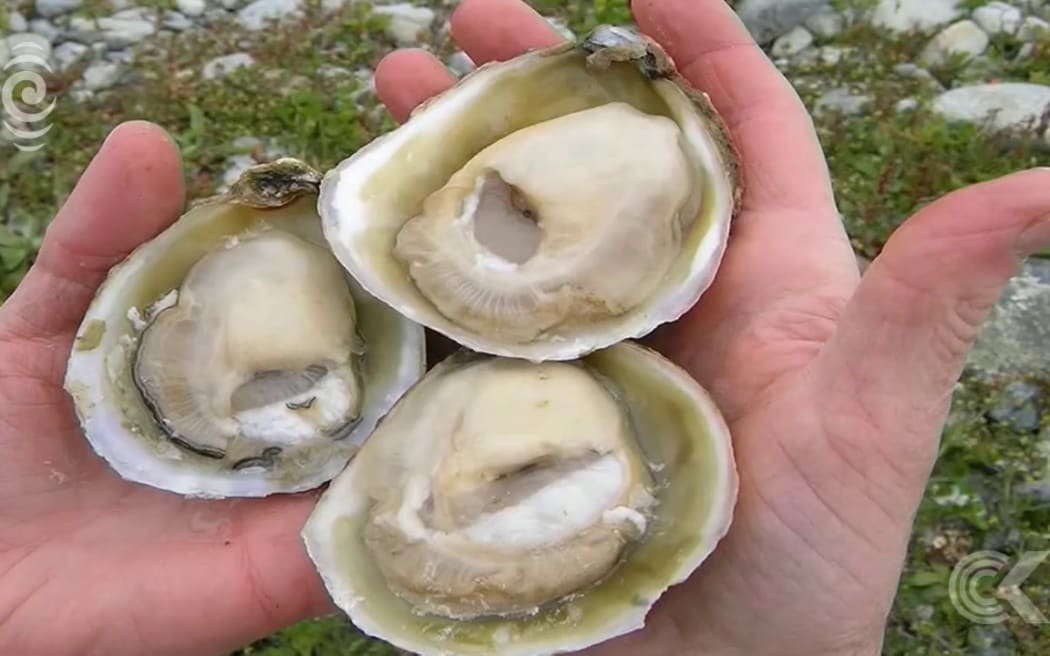It is likely to take six months to cull or harvest Stewart Island's flat oysters to stop a damaging parasite from spreading, a local farmer says.

Stewart Island oyster farmer talks to John Campbell: RNZ Checkpoint Photo: RNZ / YouTube
The Ministry of Primary Industries (MPI) has ordered a cull of farmed oysters in Stewart Island's Big Glory Bay and the Marlborough Sounds to try to stop the spread of bonamia ostreae, which could threaten the famous Bluff oyster industry.
Jeff Walker, who owns two marine farms in the bay, told Morning Report it generally took one week to harvest three lines.
"It takes a week to harvest three lines and if you run that across our lines, and the other farms that we're associated with, I think there's about 80 lines and there's only one harvest barge.
"My rough calculation is, unless they can get some other harvest barges in there, there's six months of work."
MPI said it was not yet sure how many oysters needed to be culled, how long it would take to pull them up or what compensating the farmers could cost.
MPI spokesperson Geoff Gwyn told Morning Report staff have been handing out information packs to the affected farmers, detailing how the shellfish should be removed from the water.
He said the ministry would get a better idea of the oyster numbers when it met with marine farmers tomorrow.
The harvested oysters were able to be sold, as long as they met minimum size requirements
"If these oysters are of a saleable size, then as long as they comply with the protocol they can be harvested and sold for human consumption."
He said compensation would be available to affected farmers.
"I'll walk them through the process in detail tomorrow and then they can supply applications, which have to meet certain criteria under the Biosecurity Act.
"There's no cap to this."
But Mr Walker said his oysters would not be big enough to sell and he expected they would end up in the landfill.
Marine farmers in the area would suffer the effects of the cull for as long as a decade, he said.

